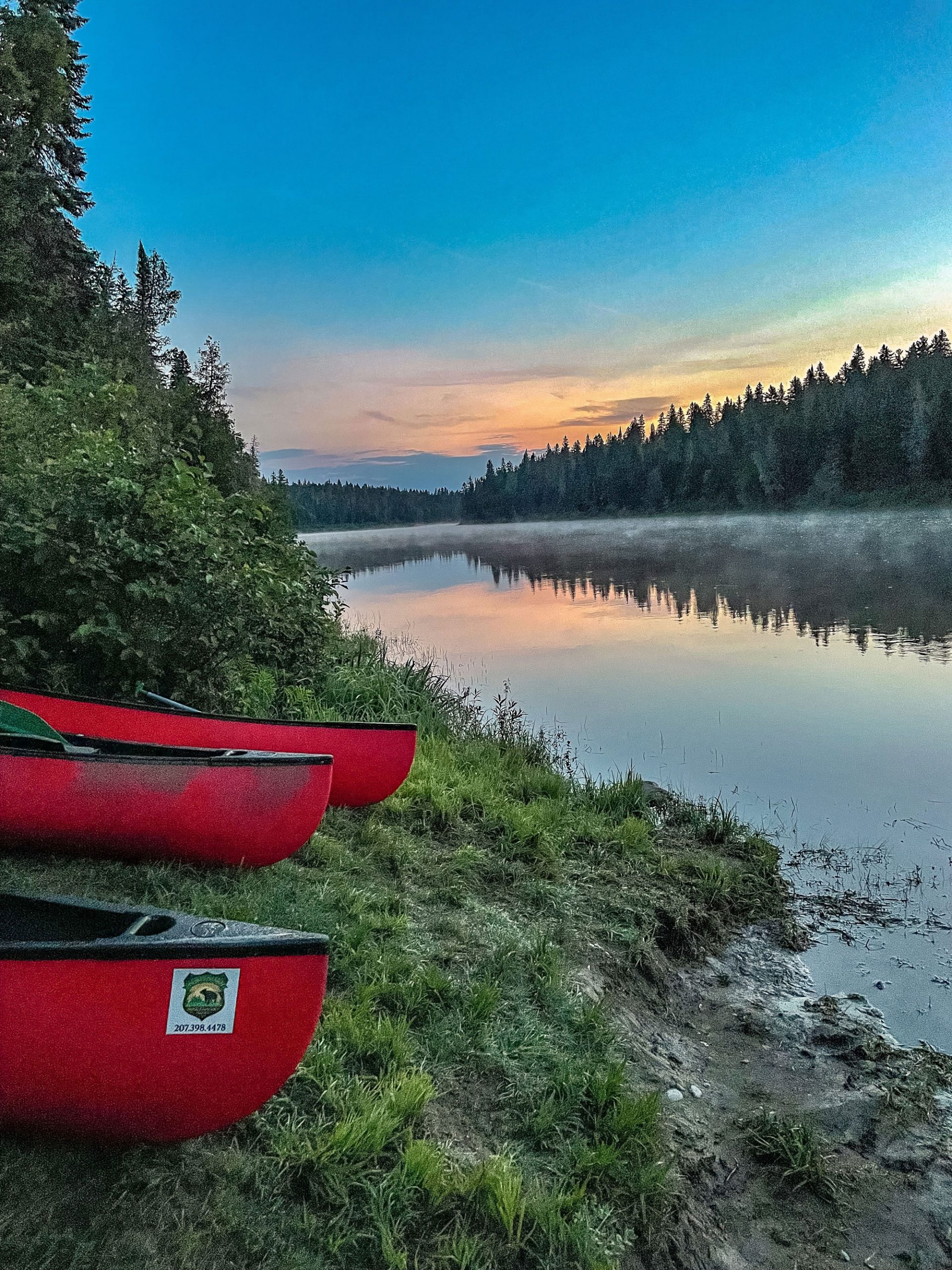There’s no question that hiking and backpacking offer rich rewards, but they come at a cost. Sore feet, muddy trails, and long days wearing backpacks. Why not switch it up? A paddling trip offers a lot of the same benefits as backpacking (nights in beautifully wild places, moving through the outdoors under your own power, and more) and opens up a huge amount of watery terrain that you otherwise wouldn’t be able to explore. Not to mention, it comes with a fraction of the discomfort and some undeniable perks. Here’s why you should consider ditching your trekking poles for paddles.

7 Reasons To Trade Your Trekking Poles for Paddles and Plan a Paddling Trip
- Self-preservation: If you do a lot of hiking and backpacking, you’re putting a heavy load on your knees. Mixing in a paddling trip now and then allows you to spare your knees while still enjoying an outdoor adventure.
- Explore a Unique Wilderness: Footpaths lead us to some genuinely miraculous places. The same is true for waterways. By branching out in a canoe or kayak, you can visit places that can’t be seen easily on foot, and are much better suited for the oar.
- See Moose: Ponds, streams, and rivers are great places to spot moose. Get an early morning start on your paddling trip, and you stand a far better chance of spotting a moose at the water’s edge than you do in the woods.
- Explore Bird Habitat: There’s nothing like being immersed in a symphony of songbirds as you walk lightly through a forest at dawn, but paddling trips offer a chance to lay eyes on species you’re not likely to spot on your backpacking trips. Bald eagles, great blue herons, kingfishers, mergansers—the list goes on. Bring a bird book and binoculars.
- Never Want for Water: Your days of rationing sips and fretting over the quality of the next water source quickly become a distant memory as you float down the clean lakes and rivers of the Northeast. Bring a filter, and you’ll never go thirsty. And thirst-quenching properties aside, traveling on the water offers limitless swimming opportunities, which are just plain good for the soul.
- Indulge in a Change of Pace: While footpaths often beg us to hike from dawn to dusk, waterways speak a different language. In general, the ideal time to be on the water is from sunrise to 2 p.m. This is when the wind (and water) is most likely to be calm. To a hardened backpacker, it feels entirely wasteful to squander daylight hours at camp, but after a swim, a good meal, and a clean change of clothes, chances are you’ll settle in just fine.
- Treat yourself to Creature Comforts: Hiking trips force us to do without all but the bare necessities, but paddling trips invite indulgence. There’s no need to choose between a tent or a hammock: bring both. And bring a chair, too. Pack camp slippers, cozy clothes, board games, and a book. Best of all, bring a camp stove, a cutting board, a tablecloth, and all the ingredients you need for your favorite meals. Dine under a big tarp to protect your site from the rain. It’s like car camping but in the wilderness.
Adding a paddling trip into your repertoire once in a while won’t take away from your love affair with your trekking poles; your heart will grow to make room for new adventures.

Sarah Hunter
Sarah is the communications director for Pine Island Camp, a trip leader for the Appalachian Mountain Club, and a freelance writer. She lives in Maine with her husband and their two sons, and together have trekked and pedaled thousands of miles – from day hikes and backpacking trips in the high peaks of New England to week-long, self-supported bike tours in the US and Canada.
Related Posts
April 2, 2024
10 Tips for Mountain Biking Etiquette During Mud Season
One rough spring could ruin the…




